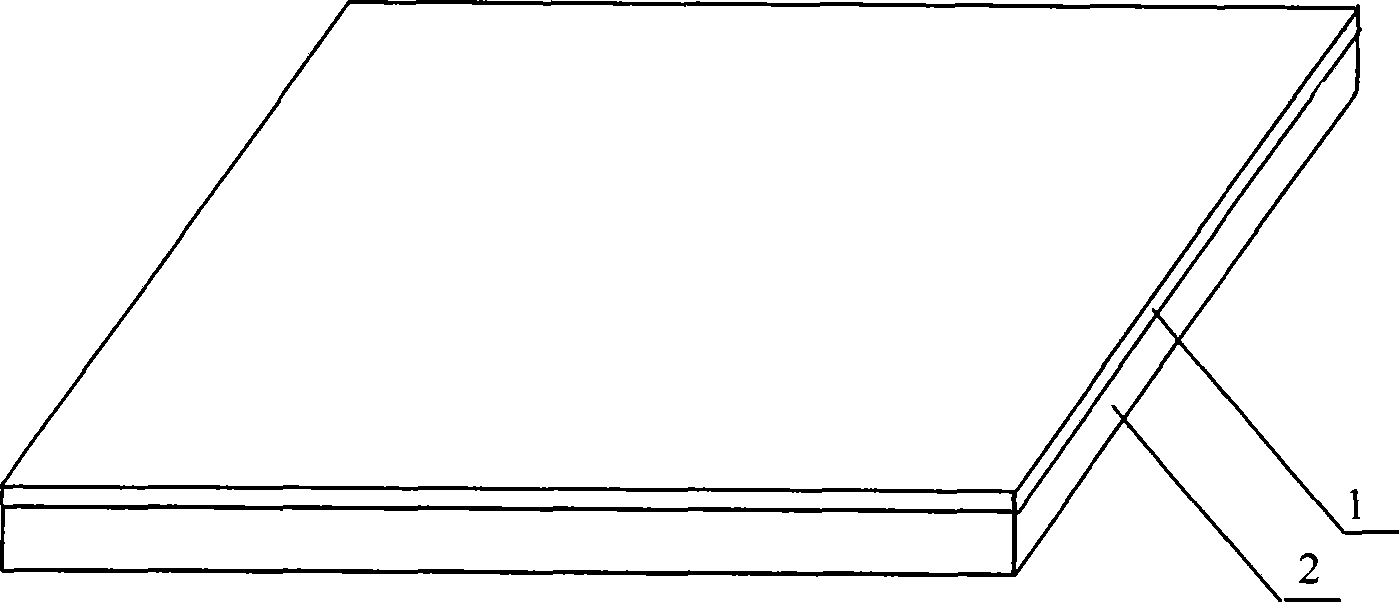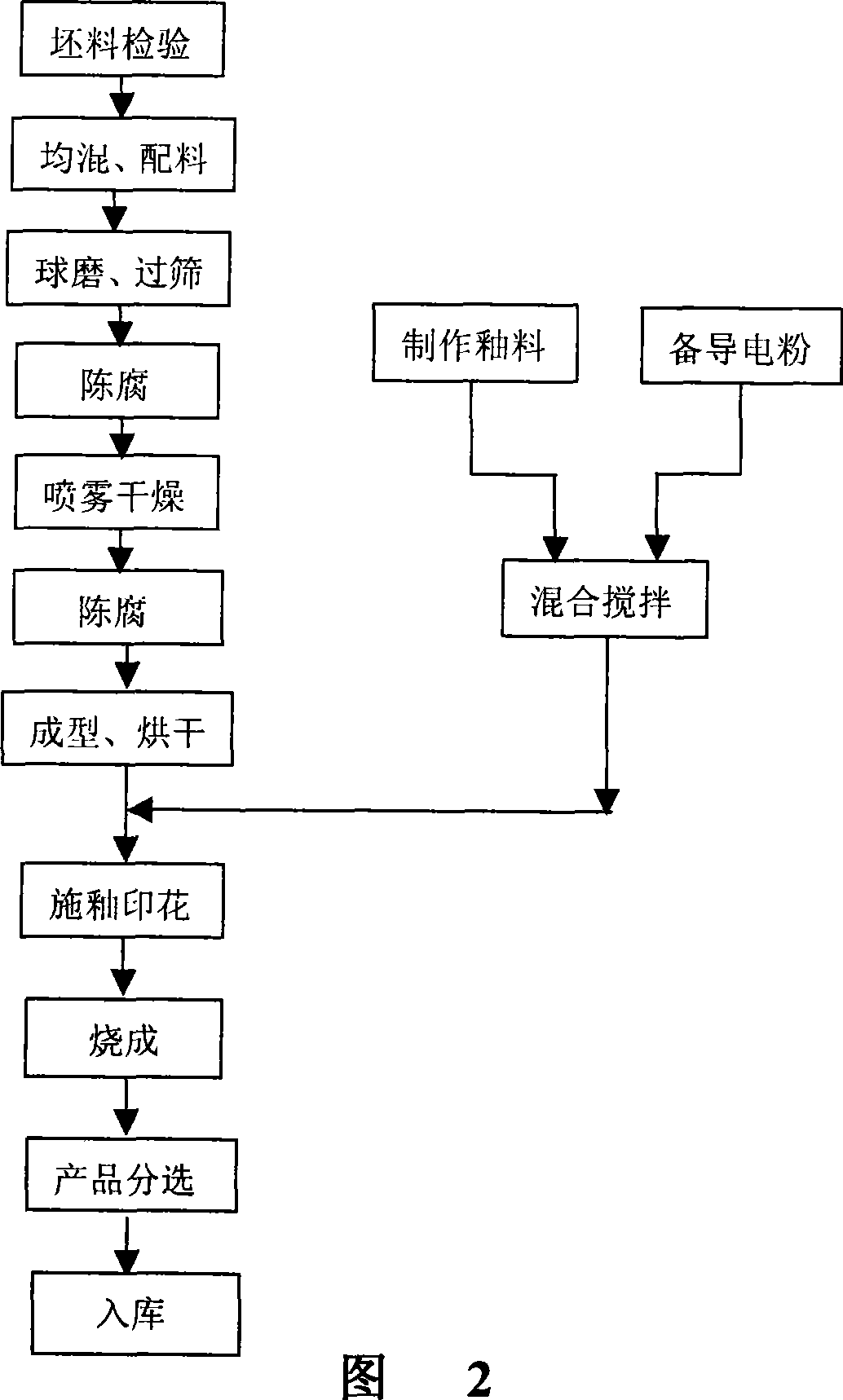Antistatic ceramic floor and preparing method thereof
An anti-static, ceramic technology, applied in the direction of floors, buildings, building structures, etc., can solve the problems of inability to meet high-performance anti-static and long life, the anti-static performance is not stable enough, and cannot be applied in a large range, and achieves economical savings. The effect of production man-hours, simple construction, and simple and easy preparation method
- Summary
- Abstract
- Description
- Claims
- Application Information
AI Technical Summary
Problems solved by technology
Method used
Image
Examples
Embodiment 1
[0025] Referring to Figure 2, according to the existing process, the ceramic floor is made first through batching → ball milling → sieving → aging → spray drying → aging → final molding and drying; at the same time, glazes are made and conductive powder (Sn: 75 %; Zn: 15%; Ti: 10%;), then add the conductive powder to the glaze according to the proportion of the conductive powder to 30% of the total weight, mix and stir evenly; after the ceramic floor molding process is completed, the glaze and The mixture of conductive powder is coated on the surface of the ceramic floor according to the preset printing scheme; the firing temperature is controlled at 1180-1200°C for 50 minutes; the finished products are sorted to obtain qualified finished products.
Embodiment 2
[0027] The method is the same as in Example 1, the difference is that the components of the conductive powder are: Sn: 55%; Zn: 25%; Ti: 20%; the conductive powder accounts for 20% of the total weight and the conductive powder is added to the In the glaze, the firing temperature is controlled at 1180-1200°C for 40 minutes.
Embodiment 3
[0029] The method is the same as in Example 1, the difference is that the components of the conductive powder are: Sn: 55%; Zn: 20%; Ti: 25%; the conductive powder accounts for 25% of the total weight and the conductive powder is added to the In the glaze, the firing temperature is controlled at 1180-1200°C for 40 minutes.
PUM
| Property | Measurement | Unit |
|---|---|---|
| wear resistance | aaaaa | aaaaa |
Abstract
Description
Claims
Application Information
 Login to View More
Login to View More - R&D
- Intellectual Property
- Life Sciences
- Materials
- Tech Scout
- Unparalleled Data Quality
- Higher Quality Content
- 60% Fewer Hallucinations
Browse by: Latest US Patents, China's latest patents, Technical Efficacy Thesaurus, Application Domain, Technology Topic, Popular Technical Reports.
© 2025 PatSnap. All rights reserved.Legal|Privacy policy|Modern Slavery Act Transparency Statement|Sitemap|About US| Contact US: help@patsnap.com


